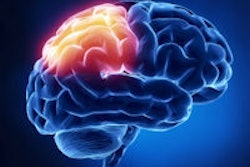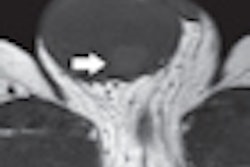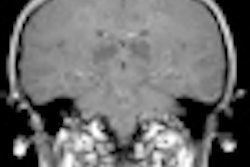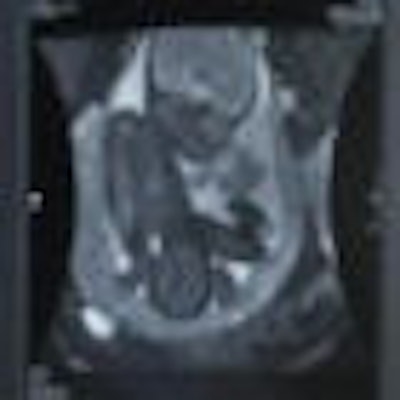
In what is believed to be a first in the U.S., radiologists at Lucile Packard Children's Hospital in Stanford, CA, have used prenatal MRI to detect a rare genetic disease in a newborn.
Congenital chloride diarrhea (CCD) can cause severe dehydration and serious metabolic disturbances in newborns if not detected early and treated quickly. Only an estimated 250 cases of the condition are reported annually around the world. Infants with the disease are often mistakenly treated for other diarrhea-causing ailments.
Dr. Richard Barth, chief radiologist at Packard Children's and a professor of pediatric radiology at the Stanford University School of Medicine, said it was the first instance of CCD he had ever seen.
Barth made his diagnosis in February 2009 when an expectant mom was referred to him for follow-up of an abnormal prenatal ultrasound. The ultrasound showed classic signs of bowel obstruction.
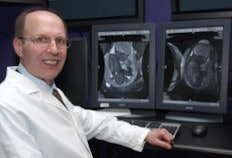 |
| Dr. Richard Barth, chief radiologist at Packard Children's, used prenatal MRI to detect a rare and often-misdiagnosed genetic disease called congenital chloride diarrhea. The diagnosis is one of only four known cases of its type ever made via prenatal MRI. Image courtesy of Business Wire. |
To garner more information about the fetus, Barth ordered an MRI scan and found something he could not have seen on ultrasound. Instead of showing the fetal colon filled with solid waste, as in a bowel obstruction, it was filled with fluid. The MR image led Barth to the CCD diagnosis and ultimately prevented complications when the baby girl was born at Packard a few weeks later.
Barth collaborated with obstetrics and neonatology staff in the hospital's Johnson Center for Pregnancy and Newborn Services to monitor the infant's fluid and electrolyte levels at birth. The steps were taken because the gene mutation that causes CCD damages a salt-transporting protein in the intestine. The abnormality stops the body from absorbing essential electrolytes, causing patients to have large amounts of watery, high-salt diarrhea.
Dr. Maurice Druzin, a professor and the service chief of obstetrics and gynecology at Packard Children's, said babies can go into shock and die because of the tremendous electrolyte imbalance at birth. Without the prenatal diagnosis, it could have taken physicians a few days to determine the cause of the ailment.
Untreated patients who survive early life may suffer permanent kidney damage, feeding problems, severe malnutrition, and delays in growth and motor development, he added.
For infants who are diagnosed early, treatment includes intravenous fluid and salt replacement, which can compensate for their ongoing diarrhea. As they get older, patients may take extra liquids and salts by mouth, or they can opt for newer treatments.
In this case, the little girl currently is taking an oral medication that modifies her body's salt uptake and reduces diarrhea. Though these treatments do not cure the disease, prompt diagnosis and treatment allow patients to lead fairly normal, healthy lives.
The diagnosis at Packard Children's Hospital is one of only four known cases of CCD diagnosis ever made via prenatal MRI. A scientific report on the four cases, including Barth's case and three studies from France, was published in the journal Ultrasound in Obstetrics & Gynecology (December 9, 2009). The report is a collaboration between Barth and a team of French scientists in Marseilles.
By Wayne Forrest
AuntMinnie.com staff writer
March 10, 2010
Related Reading
MRI can provide safe imaging for pediatric heart patients, August 29, 2008
MRI edges out CT in postinfarct myocardial studies, May 8, 2008
Anesthesiologists refine pediatric sedation for MRI, October 25, 2007
Pediatric MRI and suite templates: If the shoe doesn't fit, don't wear it, April 25, 2006
Copyright © 2010 AuntMinnie.com




